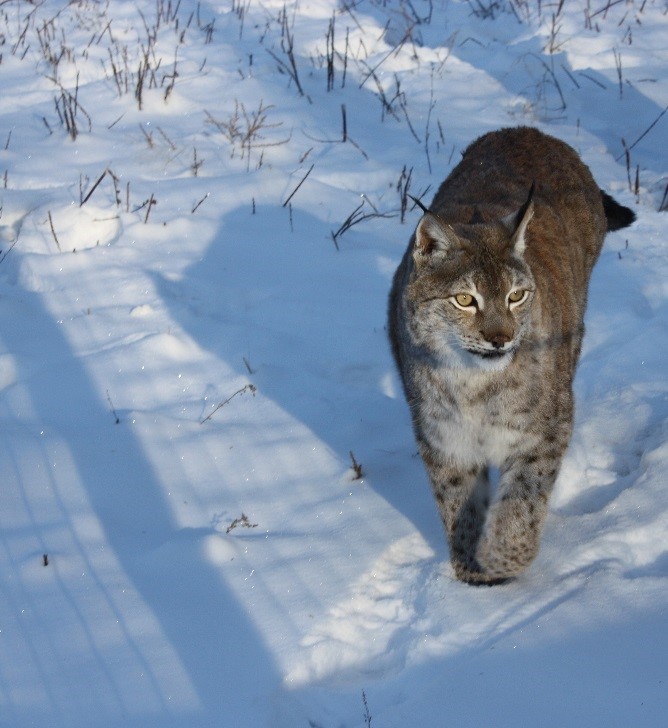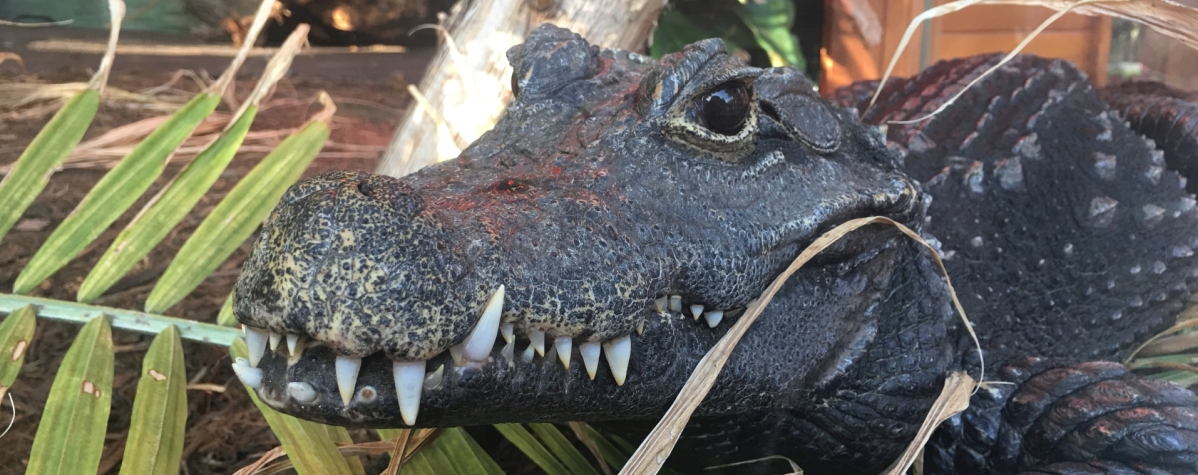Eurasian Lynx
Scientific Classification 
| Species |
Lynx lynx |
| Kingdom | Animalia |
| Phylum | Chordata |
| Class | Mammalia |
| Order | Carnivora |
| Family | Felidae |
| IUCN Status | Least Concern |
Appearance and lifespan
The Eurasian lynx is a medium size cat however they are the largest species of lynx; they can reach up to 80 to 130 cm (31 to 51 in) in length, 60 to 75cm (23 to 29 in) in height and weight 18 to 40kg (39 to 88 lb) on average. As a predatory species, they can reach top speeds of up to 80km/h (49 m/h). Their average lifespan occurs from 13 to 15 in the wild and over 20 in captivity.
Eurasian lynx vary in colouration based on their geographic location and temperature. Lynx that live in northern environments typically are grey and white in colour and are lightly spotted, as you move further south their coats become deeper red and brown in colour becoming more heavily spotted. Their coats are double layered to keep them warm in cold weather and a short tail that is black tipped. They have large paws specialized for deep snow acting like snowshoes. Their ears have a distinctive black tuft on the tip.
Behavior and reproduction
Lynx are crepuscular which means that they are typically more active at dawn and dusk and sleep throughout the day. As exceptional climbers they use tall trees and large rocks to watch for prey launching and ambushing them.
Lynx are generally a solitary animal however during mating season males and females will overlap territories. Typical territories vary from 20km2 to 400km2. Lynx are polygynous which means one male mates with multiple females. Breeding season occurs over February and April to ensure young mature before winter. Through scent, female Eurasian lynx will mark their availability for mating with nearby males. Gestation will occur in small secluded dens and after 2 months, 2 to 3 kittens are born. Kittens will eat solid food after 6 weeks forcing them to leave the den. Lynx become independent at around 10 months and reach sexual maturity at 2 to 3 years old.
Ecology and conservation
Eurasian Lynx live in many different ranges of habitats in Europe, Russia and Asia. Their natural habitat includes boreal forests to rocky, bushy areas. Eurasian lynx are carnivores eating a variety of deer as well as red foxes, rabbit, marmots, beavers and birds on occasion. Currently Eurasian lynx are least concern by IUCN assessments, with their numbers ranging from 9000-10000 in Europe over 22000 in Russia and over 30000 in Asia. As a predatory species, these species of lynx influence populations and distributions of their prey.
Food at the Zoo
At the Park and Zoo the Eurasian lynx eats a variety of meat, including beef, pork, chicken and whole prey items.
Threats
Threats of this species in the natural world include habitat loss and destruction due to deforestation. Illegal hunting, game hunting and trapping of this species for fur is the primary threats to the abundance of this species in their natural habitat.
Did you know?
- Eurasian Lynx use the element of surprise for capture of prey
- Eurasian lynx grow thick, long hair on their large paws to give a snow shoe effect for moving through deep snow of their natural habitats.
- The Eurasian lynx is the third largest predator in Europe next to the brown bear and the wolf.
Adopt the lynx
Become a part of the the Riverview Park and Zoo family through our Adopt an Animal Program!


